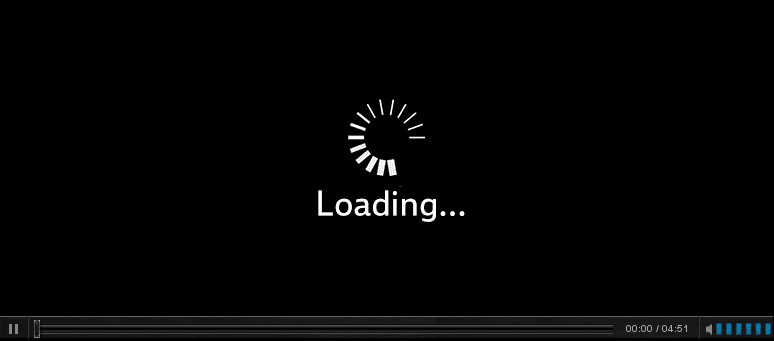Why Video Dominates the Internet
Video is ubiquitous on the internet and everybody knows that. But the CISCO Visual Networking Index (VNI) quantifies it. Currently online video consumption accounts for 64% of global internet traffic and is projected to grow to 80% by 2019. This video traffic is driven by online video services such as Netflix and YouTube, but this is just the tip of the iceberg. Thousands of services similar to Netflix exist in the US alone, not to mention world wide. Millions of websites monetize video through ads or subscriptions. For example, websites with educational videos that show people how to use a specific software such as Photoshop or describe Roger Federer’s forehand, gaming platforms that show live games and walkthroughs, websites where people can learn how to cook or fix a car – every major broadcaster provides video on the internet.
![video_forecast_2014_2019[1]](https://b3148424.smushcdn.com/3148424/wp-content/uploads/2016/04/video_forecast_2014_20191.png?lossy=2&strip=1&webp=1)
Video is now also becoming heavily used in marketing. Video is probably the most powerful tool of communication and used by many more kinds of websites. Video is no longer a niche form of marketing. It is now a central part of marketing strategy and 81% of companies are already producing video content for their website. For example companies are using videos to explain their products, showing step by step instructions, or telling their brand story and introducing customers to their business. These are just a few examples. Videos are simply everywhere and there is a good reason for that:
- video increases engagement
- video increases session duration
- video increases conversions
Marketers learned to love video as it is the future of content and product marketing. comScore for example, reports that website visitors who have watched a video are 64% more likely to buy an online product and stay 2 minutes longer on average. According to a study from Usurv, a UK market research company, users are much more likely to share (39%), comment (36%) and like (56%) an online video compared to a text blog article. There are many studies that show similar effects when using video on your website, and marketers are already shifting their budgets in the online video direction. 68% of marketers and agency executives expect their online video budgets to increase in the next 12 months.
![video_hands[1]](https://b3148424.smushcdn.com/3148424/wp-content/uploads/2016/04/video_hands1.jpeg?lossy=2&strip=1&webp=1)
Considering all of these facts, this blog should be a video ;), which is true, but serving videos from your website is different than serving text. Videos must be encoded for the web and served in a way that they are accessible for all devices with different and fluctuating bandwidth conditions, e.g., WiFi, 3G, 4G or fixed access connections. If your videos are not encoded properly, users will leave your website and many of them will never come back. According to a study from Conviva just the major providers of the online video streaming market lost $2.16B in revenue in 2012 due to video problems, and will miss out on an additional $20B in 2017. The top 3 problems that cause users to leave your website are surprisingly not new, long startup delays, frequent buffering and low quality are things that every user on the internet experiences occasionally and this is why the market looses billions of dollars.
Startup Delay

It is not surprising that slow startup of a video will increase user abandonment and a study from the University of Massachussetts, Amherst and Akamai has quantified that in a scientific data-driven manner using a dataset of 23 million views from 6.7 million individual users. After 10 seconds of startup delay, more than half of your audience has left and only 8% of users will return to your website within 24 hours after experiencing a video failure. Specifically, if it takes longer than 2 seconds to load the video, viewers will start to leave. After 5 seconds, more than 20% of your users abandon, and with each additional second of delay, 6% of your users leave and the majority will never come back.
Another important fact is that users are less tolerant of startup delay for short videos compared to longer videos. This is a psychological effect, e.g., waiting 30 minutes for a 4-hour flight will often be tolerated, while the same waiting time for a ten minute bus ride will be seen as exhausting. Additionally, the study shows that users which have a better connected device have less patience for startup delay and also abandon sooner as these users expect a fast startup and are much more disappointed when the startup is slow.
Buffering
Buffering is annoying and everybody knows the situation when buffering occurs right at the moment when a touchdown, soccer goal, or the thrilling moment in a movie happens. Conviva’s annual Viewer Experience Report shows year after year, that users are becoming less tolerant of buffering. While in 2011, 1% of buffering lead to an average decrease of 3 minutes in viewing time, users are today much more sensitive and their patience regarding acceptance of buffering is decreasing. As a consequence, in 2014 1% of buffering lead to an average decrease of 14 minutes in viewing time.
![buffering_stats_2014[1]](https://b3148424.smushcdn.com/3148424/wp-content/uploads/2016/04/buffering_stats_20141.png?lossy=2&strip=1&webp=1)
Similar findings are shown by the University of Massachussetts, Amherst and Akamai. They compared viewers in their dataset that watched the exact same content, with the only difference being that one experienced buffering and the other did not. On average, a viewer that experienced 1% buffering watched 5.02% less of the video with a general upward trend with each additional percent of buffering.
Low Quality
We are all used to traditional broadcast video quality and we expect that video on the internet should have at least the same quality. Conviva conducted a study in March 2015 and asked 400 UK consumers about their attitude towards watching TV delivered over the Internet. Today’s viewers are looking for a TV-like experience and do not show much patience if this promise is broken due to web video problems. The study shows that 6 out of 10 viewers pay for a subscription VOD service while the key differentiator for the decision of which one they choose is viewing experience.

Conviva asked the customers in this study “how long would you watch a video with poor video quality”. For short videos (less than 3 minutes) 33% of the viewers would abandon immediately and after one minute 84% of all your viewers are gone. For long form videos (15 minutes or more) the same proportion as for short videos, i.e., 33% would abandon immediately and after 4 minutes 77% of your viewers are gone and after 10 minutes less than 1 out of 10 are still watching.
Another survey from Conviva was focused on the so called “cord-never” demographic which select online video services instead of traditional Pay TV services. The survey was conducted among 750 consumers from the United States, aged 26-34. This demographic showed similar impatience for poor video quality as in the other survey, i.e., 75% would leave within the first 4 minutes. But more importantly in this survey Conviva asked what the response would be if the video experience was not satisfying. Only 49% would close the video and try again immediately, so basically half of your audience is lost. Even more interestingly, 29% would try a different service so you loose nearly one third to your competitors and 11% stop watching altogether, which means you screwed them up for everybody in the market.
This problem will increase further in the future, as consumers’ quality expectations have rapidly gone from 720p (HD) resolution to 1080p (Full HD) and soon users will begin buying 4K/UHD TVs, and also expect equally high resolutions in superior quality on the internet.
Conclusion
Everybody knows these problems and has experienced the frustration that these problems cause. However, we tend to forget how important it is to encode and prepare our videos in a way that these problems do not occur. If you remember one thing from this article, then it should be that it is critical for your business to encode and prepare your videos for the web properly.
These video problems trigger a decision from your users as to whether they should wait if things improve or leave and move on with the next activity. This decision is quantified by several studies and everybody makes that decision subconsciously, based also on previous experiences on the same website. Due to that fact that content providers are loosing viewers engagement and in the end money as their videos can not be monetized as effectively through ads, subscriptions, etc., marketers are loosing users and users engagement, which in the end decreases conversion and revenue on their businesses, as products and services cannot be sold as effectively. And by the way users get frustrated too ;).
What Can You Do?
You need to encode your videos in a way that they play everywhere, on every device, with low startup delay, with no buffering and in the best possible quality. We help you in doing so, as we use cutting edge standards for our output format such as MPEG-DASH and Apple HLS. But just using MPEG-DASH and HLS is not enough. You can implement these standards pretty badly and still get all the major video problems. For example it is possible to provide just one video quality, e.g., 1080p@4Mbps, with MPEG-DASH and HLS, which would then lead to very high startup delays, buffering and in the end a bad experience for many of your users. Just think about a user with a mobile device that is connected through 3G. This user would effectively buffer endlessly on such a stream. But not only users with low bandwidth connections would suffer on that stream; also users with high bandwidth fixed access would be affected by buffering or long startup delays. The internet works on a best effort basis and bandwidth will always vary and could also drop to very low speeds. That is typically the situation when video streams start to buffer. So just using MPEG-DASH or HLS is not enough. These standards promise video streaming with lowest startup delay and no buffering, in the best possible quality, but actually it depends on the implementation of the standard.

The way Bitmovin implements the MPEG-DASH standard is industry leading – we deliver what MPEG-DASH promises – video streaming with lowest startup delay and no buffering, in the best possible quality. Our implementation of MPEG-DASH delivers content with the lowest startup delay going down to 100ms from page load to first frame. Content created with Bitmovin plays without buffering and in the best possible quality. Specifically, Bitmovin provides 100% better quality without buffering compared to the next best industry solution. Bitmovin’s product line consists of a cloud based video encoding service and an HTML5 adaptive streaming player. These two products can be used independently, but you get the best possible experience when both are used together.
You can try our products for free. Just sign up and encode your videos properly for the web with our free plan. Embed the videos into your website and use our HTML5 player for the playback, and your users will never suffer from slow video startup, buffering and bad quality again!
Resources:




